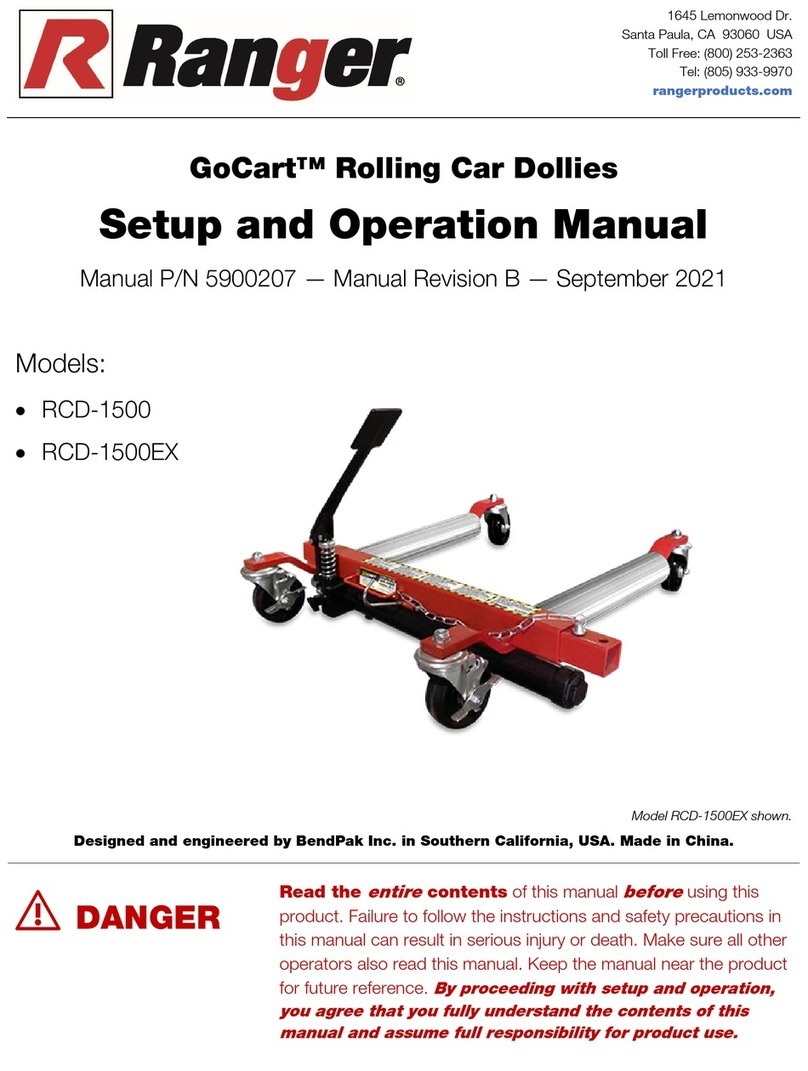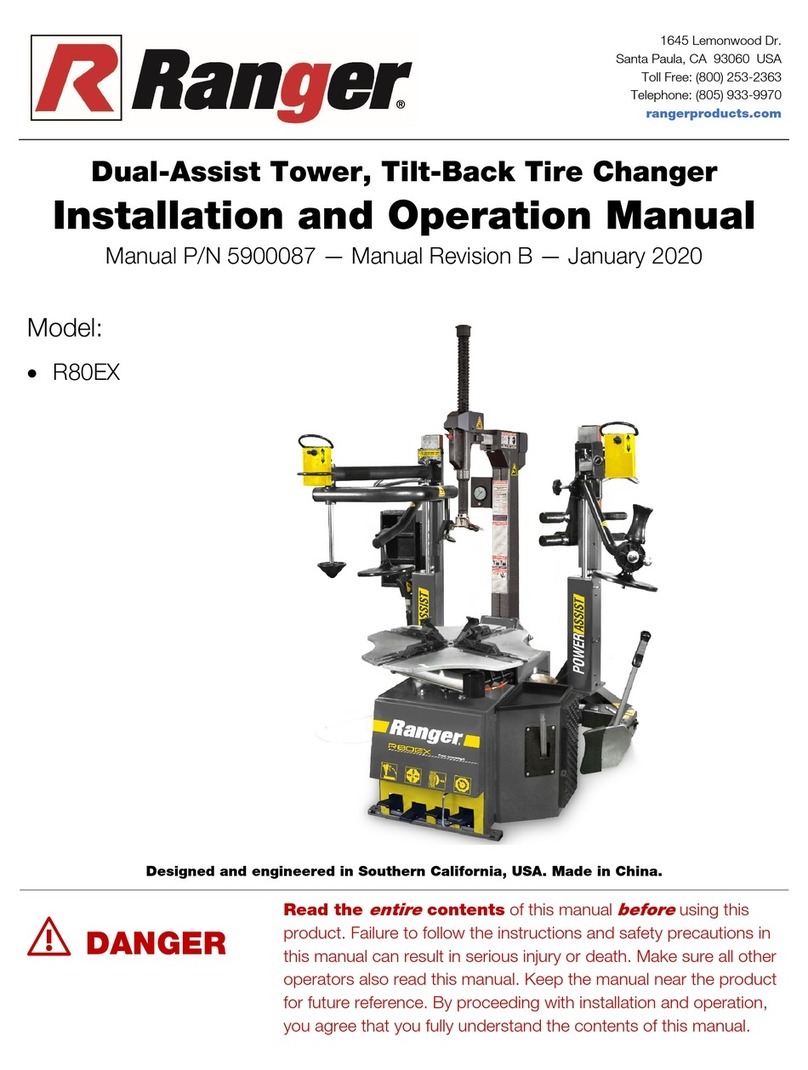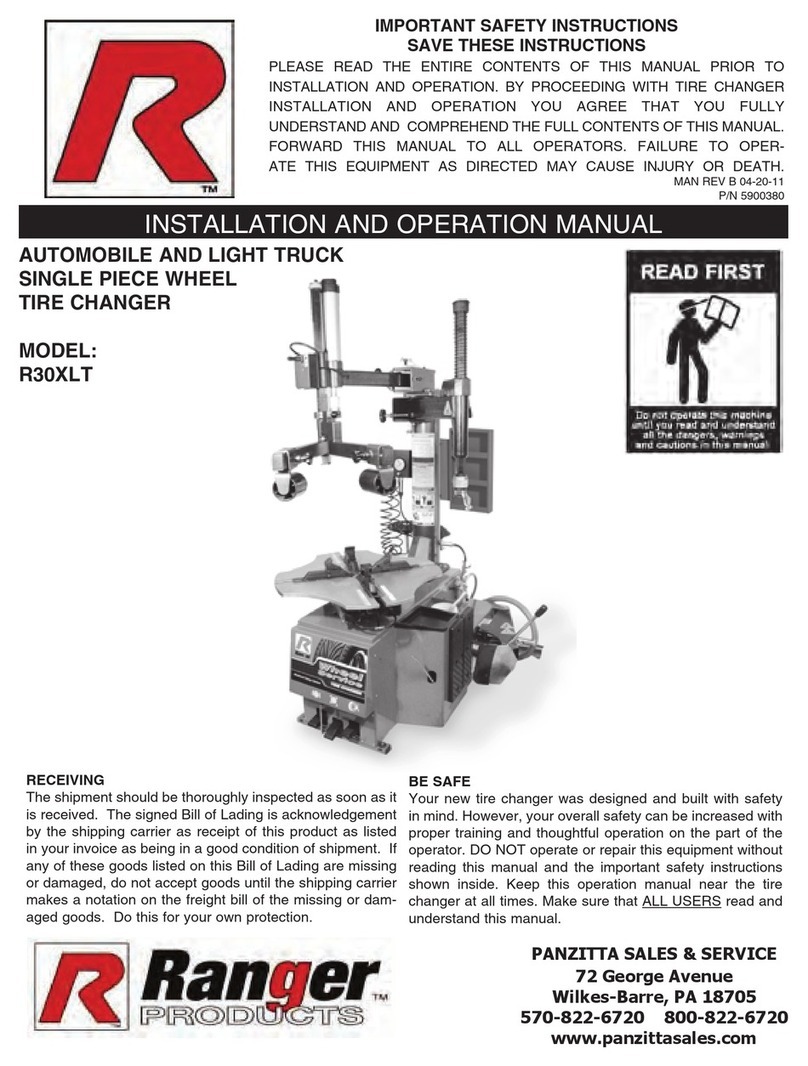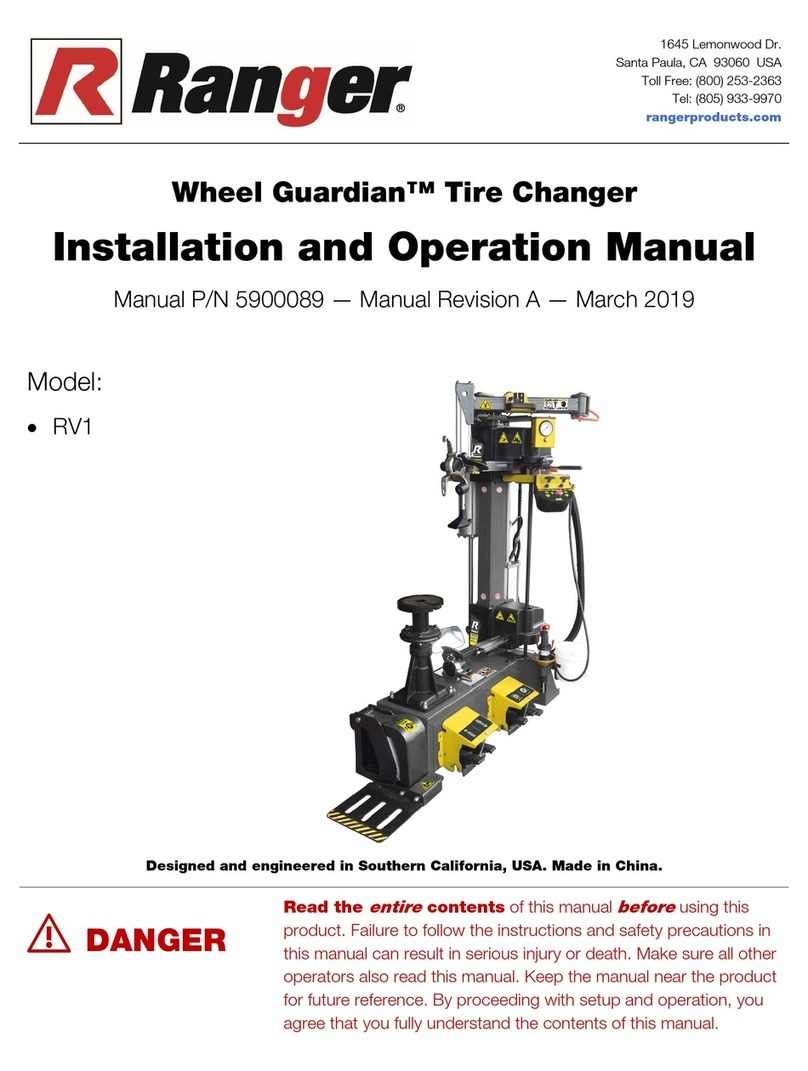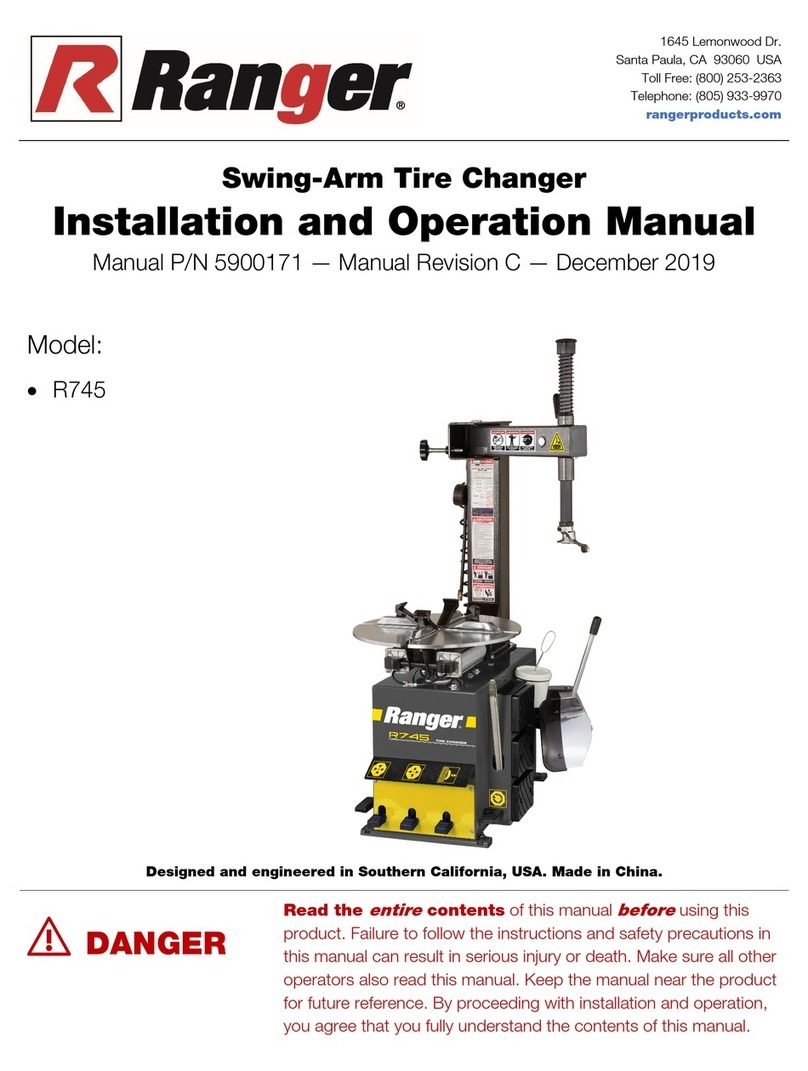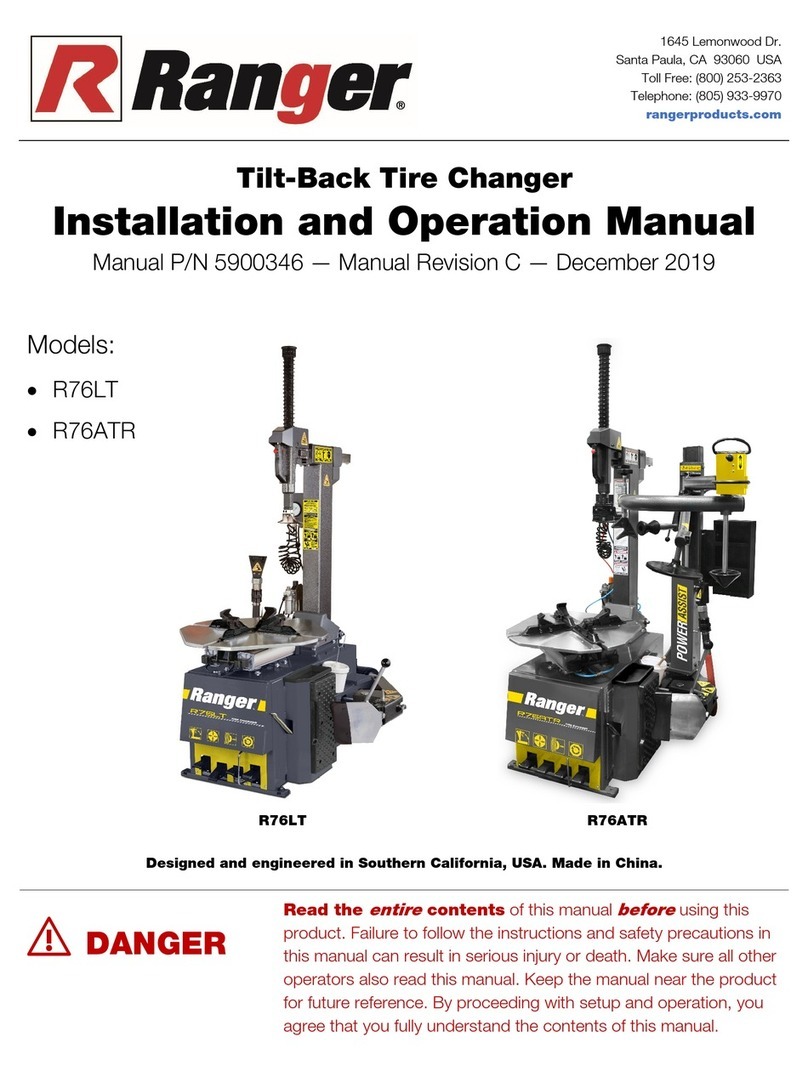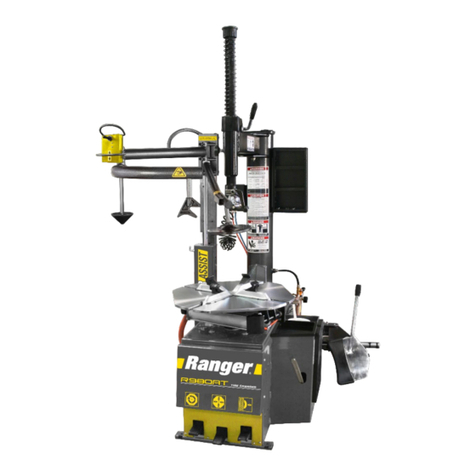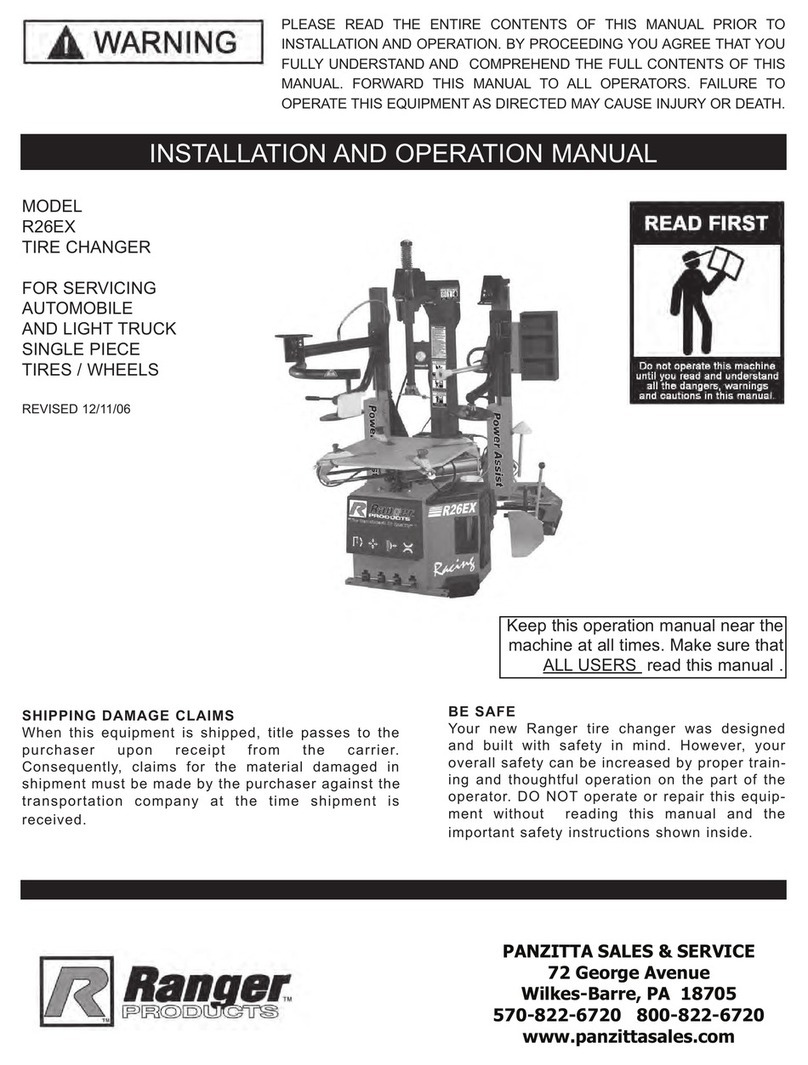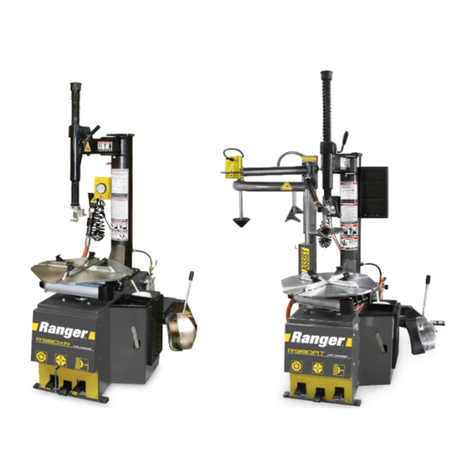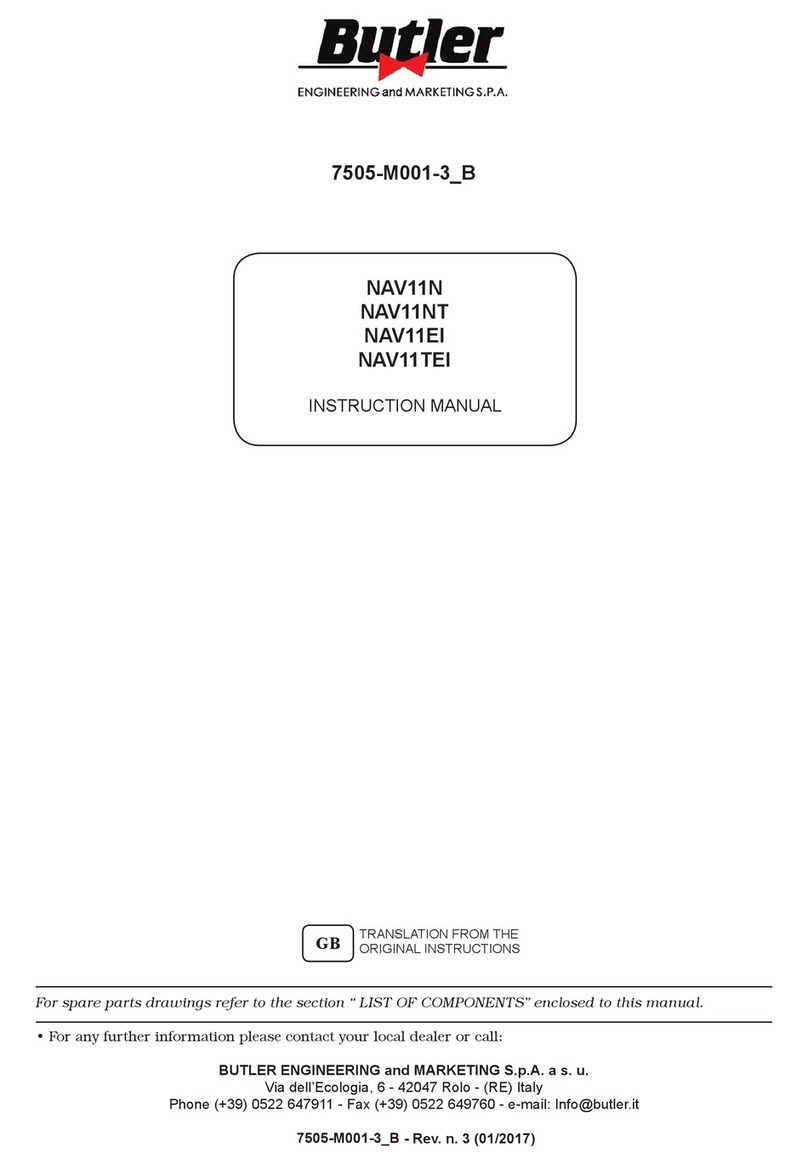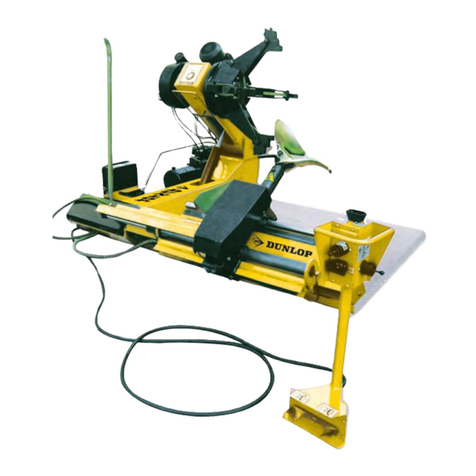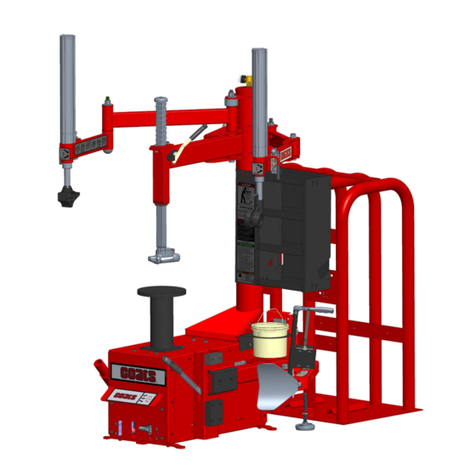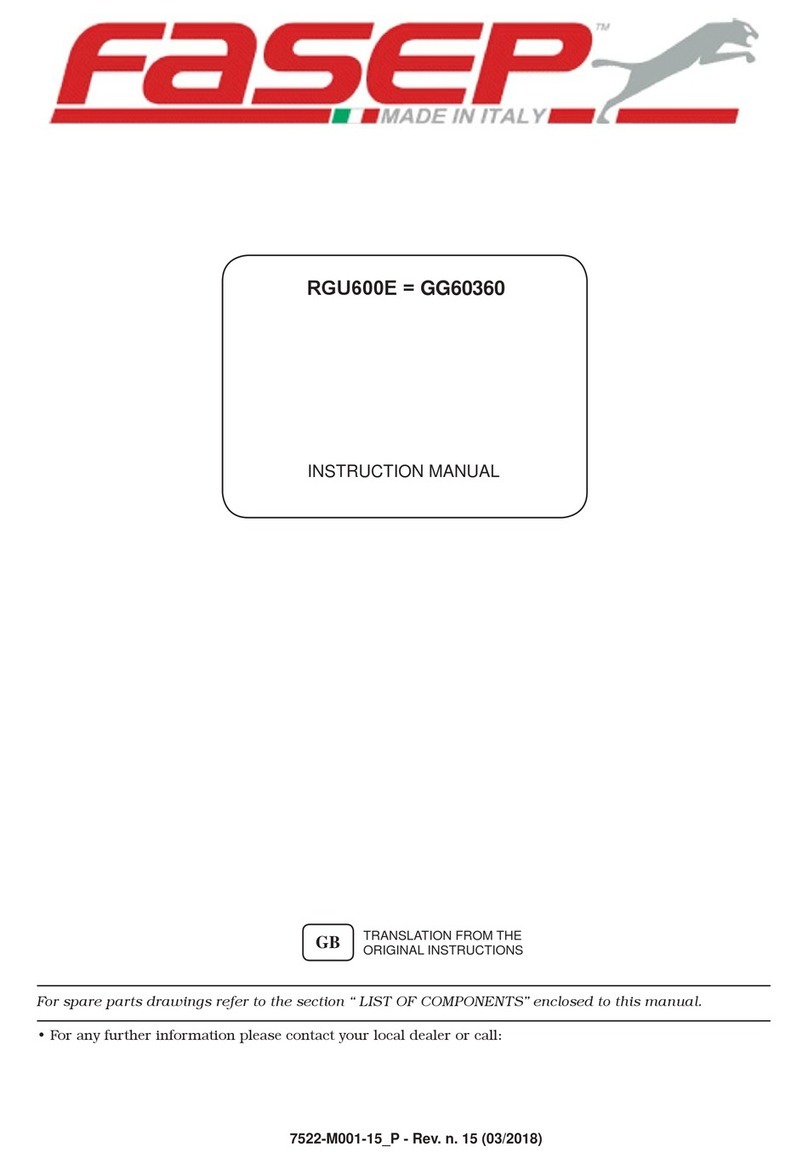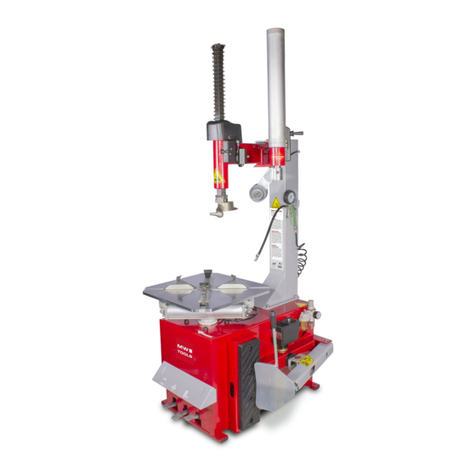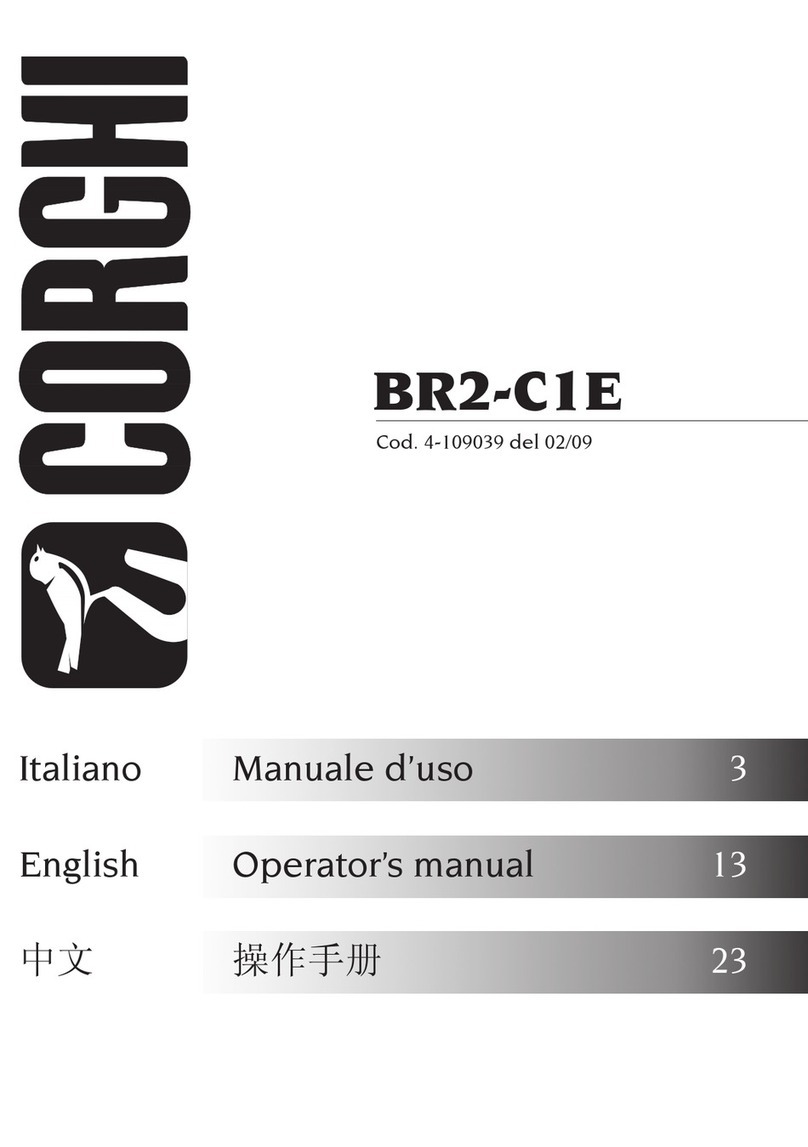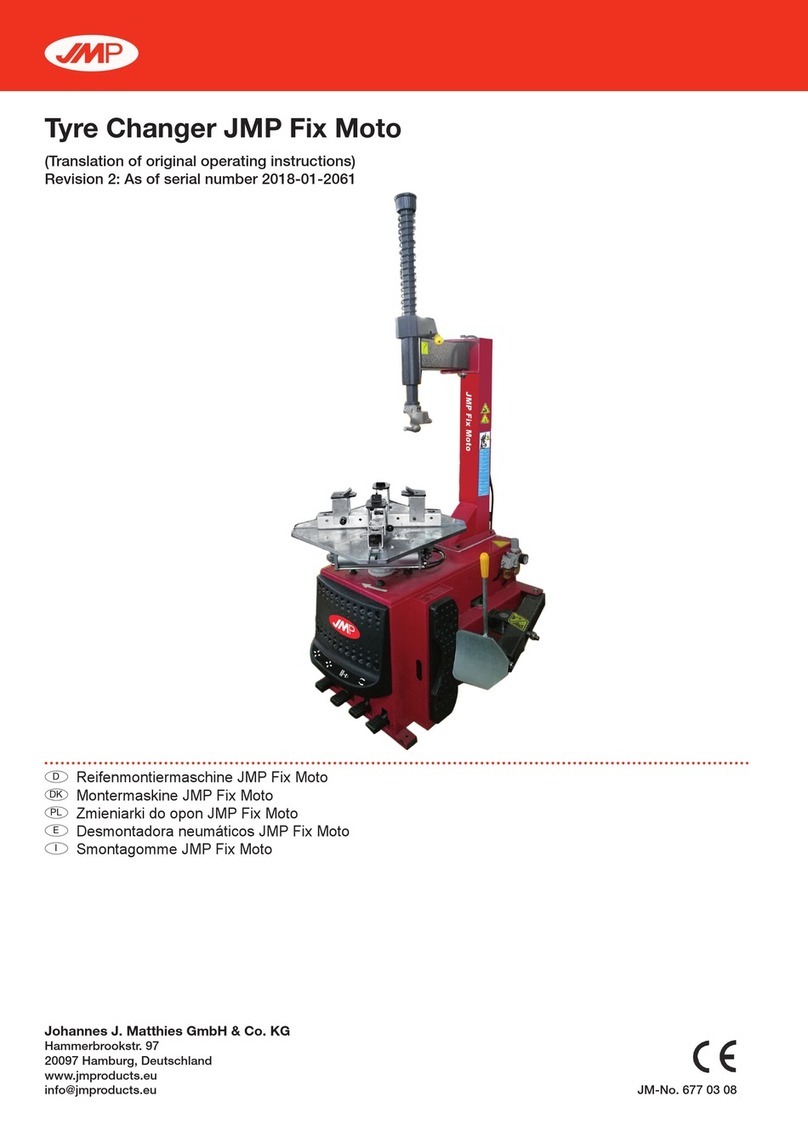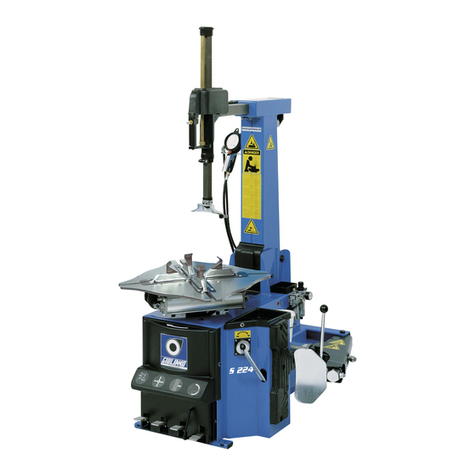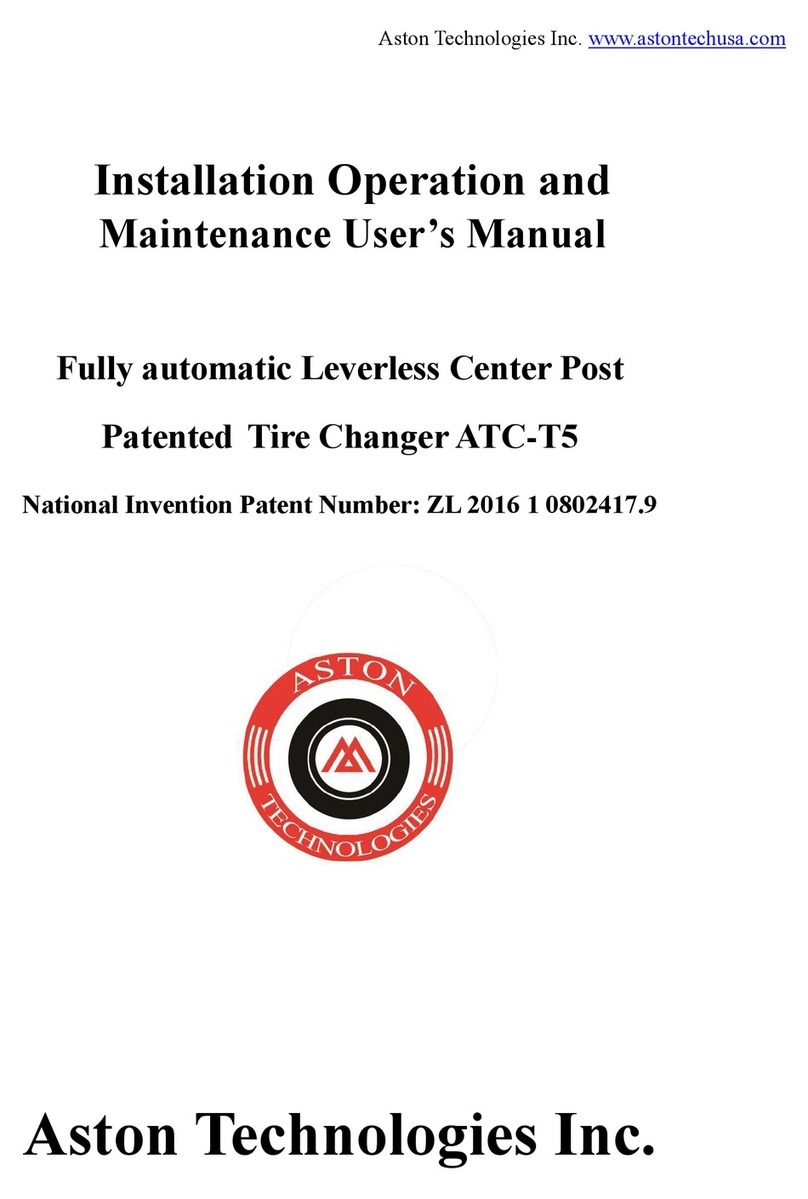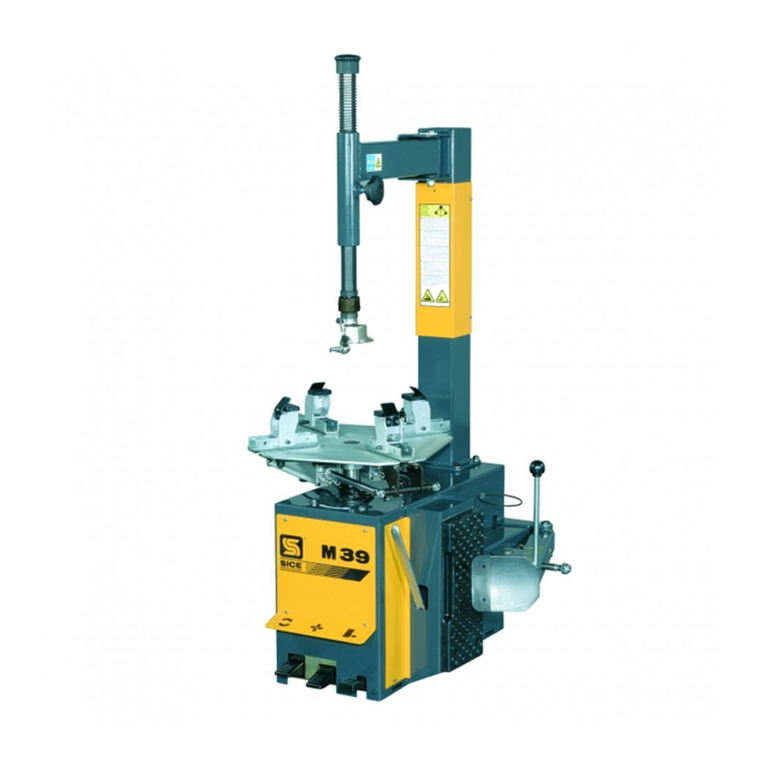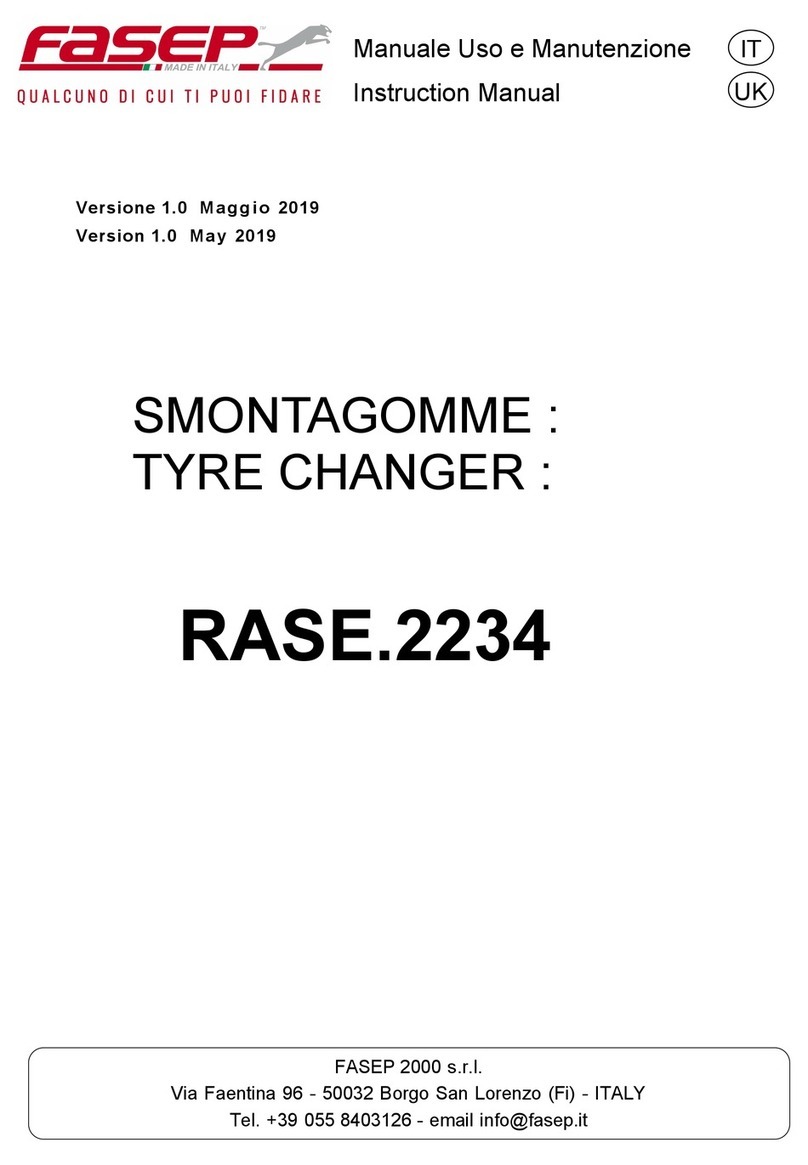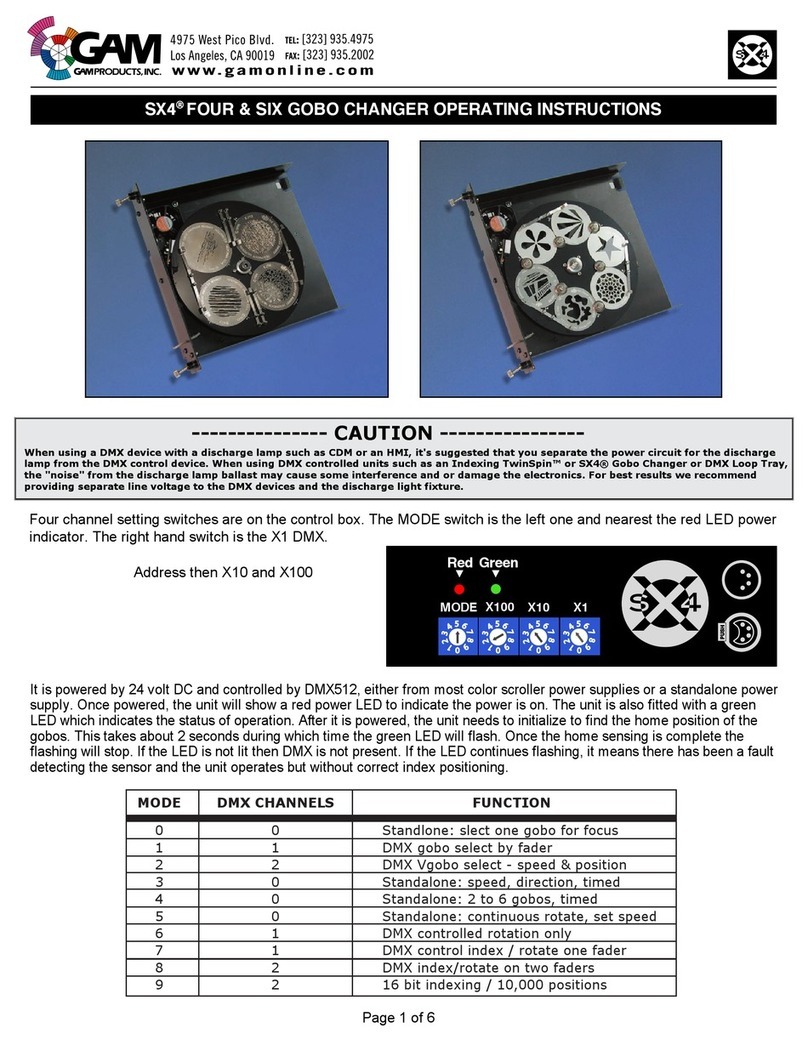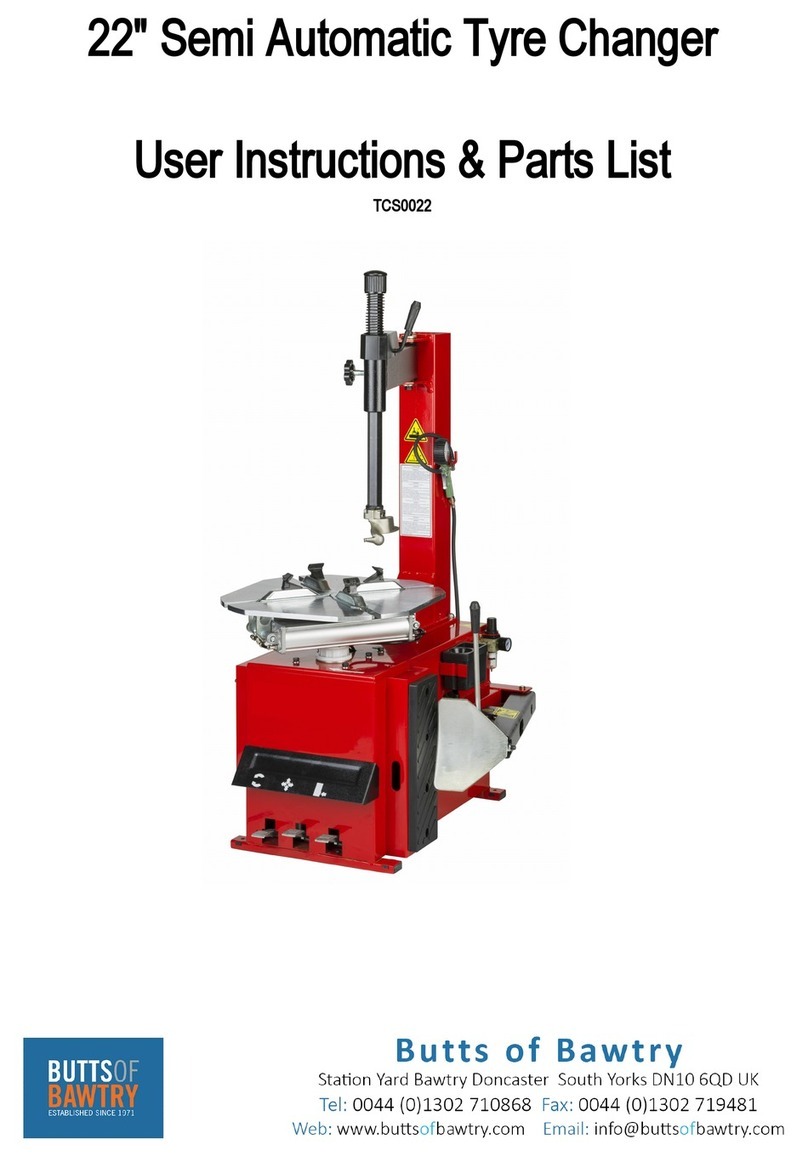
5
SECTION 2- IMPORTANT SAFETY INSTRUCTIONS
Read these safety instructions entirely. Do not attempt to install this machine if you have never been trained
on basic garage equipment installation procedures. Never attempt to lift components without proper lifting tools such as
forklifts or cranes. Stay clear of any moving parts that may fall and cause injury. When using your garage equipment,
basic safety precautions should always be followed, including the following:
1. Read and understand all instructions and all safety warn-
ings before operating service equipment.
2. Care must be taken as burns can occur from touching hot
parts.
3. Do not operate equipment with a damaged cord or if the
equipment has been dropped or damaged until it has been
examined by a qualied service person.
4. Do not let a cord hang over the edge of the table, bench,
or counter or come in contact with hot manifolds or moving fan
blades.
5. If an extension cord is necessary, a cord with a current
rating equal to or more than that of the equipment should be
used. Cords rated for less current than the equipment may
overheat. Care should be taken to arrange the cord so that it
will not be tripped over or pulled.
6. Always unplug equipment from electrical outlet when not in
use. Never use the cord to pull the plug from the outlet. Grasp
plug and pull to disconnect.
7. Let equipment cool completely before putting away. Loop
cord loosely around equipment when storing.
8. To reduce the risk of re, do not operate equipment in
the vicinity of open containers of ammable liquids (gasoline).
Keep exterior of motor free of oil, solvent, or excessive grease.
9. Keep hair, loose clothing, ngers, and all parts of body
away from moving parts. Avoid pinch points.
10. DANGER! To reduce the risk of elec-
tric shock, do not use on wet surfaces or
expose to rain. The electronics used on this
equipment contain high voltage. Disconnect
power at the receptacle or at the circuit
breaker switch before performing any electri-
cal repairs. Secure plug so that it cannot be
accidentally plugged in during service. Or
mark circuit breaker switch so that it cannot
be accidentally switched on during service.
11. DANGER! The motor on this machine
contains high voltage. Disconnect power at the receptacle
before performing any electrical repairs. Secure plug so that it
cannot be accidentally plugged in during service.
12. Use only as described in this manual. Use only manufac-
turer’s recommended attachments.
13. Do not attempt to operate this equipment if you have never
been trained on basic tire service and mounting / demounting
procedures.
14. ALWAYS WEAR SAFETY GLASSES.
Everyday eyeglasses only have impact resis-
tant lenses, they are not safety glasses.
15. Consider work environment. Keep work
area clean. Cluttered work areas invite inju-
ries. Keep areas well lit.
16. Guard against electric shock. This equipment must be
grounded while in use to protect operator from electric shock.
Never connect the green power cord wire to a live terminal.
This is for ground only.
17. Only trained operators should operate this machine. All
non-trained personnel should be kept away from the work
area. Never let non-trained personnel come in contact with, or
operate machine.
18. WARNING! RISK OF EXPLOSION. This
equipment has internal arcing or sparking
parts which should not be exposed to am-
mable vapors. This machine should not be
located in a recessed area or below oor level.
19. MAINTAIN WITH CARE. Keep equipment clean for better
and safer performance. Follow manual for proper lubrication
and maintenance instructions. Keep control handles and/or
buttons dry, clean and free from grease and oil.
20. Check for damaged parts. Check for alignment of mov-
ing parts, breakage of parts or any condition that may affect
operation of machine. Do not use machine if any component is
broken or damaged.
21. NEVER remove safety related components from the
equipment. Do not use machine if safety related components
are missing or damaged.
22. DRESS PROPERLY. Non-skid steel-toe footwear is rec-
ommended when operating machine.
23. Illegible and missing warning labels must be replaced
immediately. Do not use the tire changer if one or more labels
are missing. Do not add any object that could prevent the
operator from seeing the labels.
24. STAY ALERT. Use common sense and watch what you
are doing. Remember, SAFETY FIRST.
SAVE THESE INSTRUCTIONS
IMPORTANT
SAFETY INSTRUCTIONS
